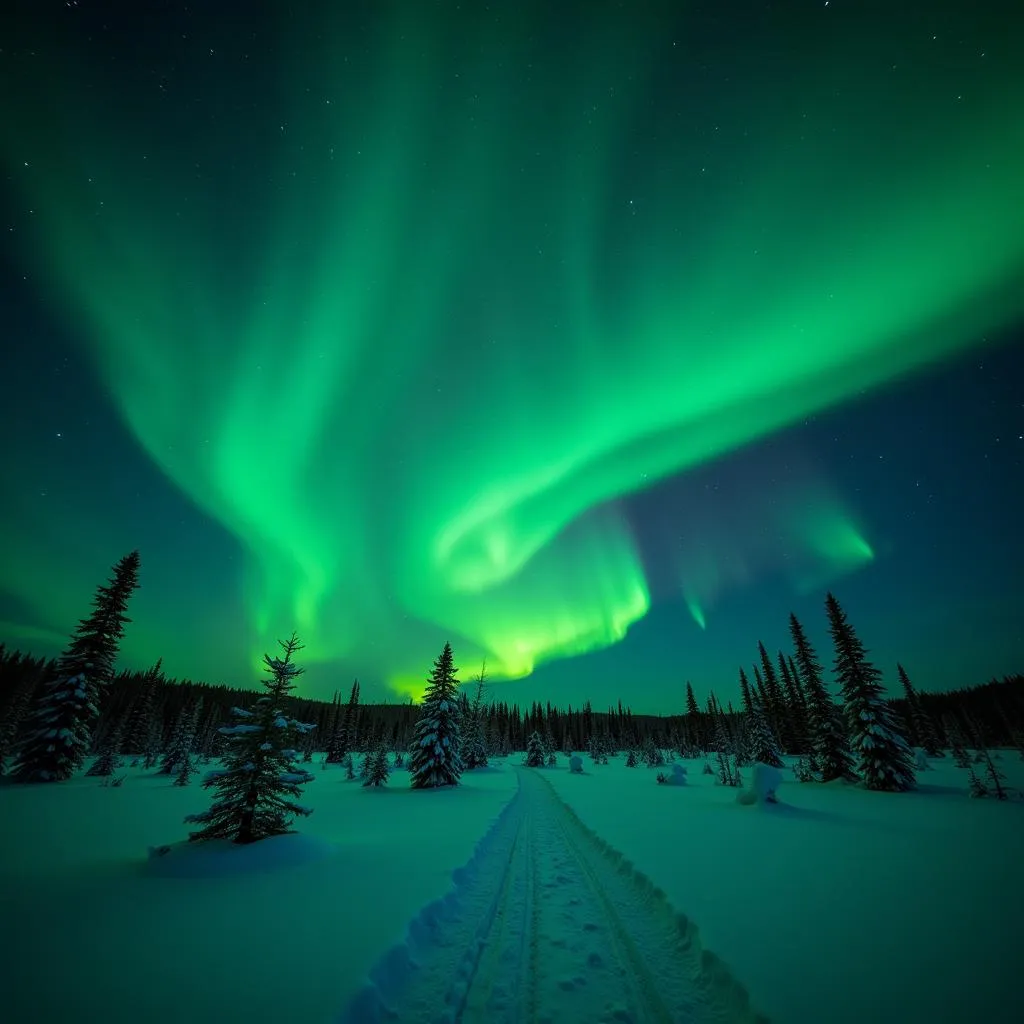Witnessing the aurora borealis is a transformative experience, and one of the most captivating aspects is its mesmerizing display of colors. From vibrant greens to ethereal purples, the aurora’s palette paints the night sky with awe-inspiring beauty. But what creates these incredible hues, and what can you expect to see on an aurora borealis tour?
Unraveling the Aurora’s Chromatic Dance
The colors of the aurora borealis are a direct result of charged particles from the sun colliding with atoms and molecules in Earth’s atmosphere. These collisions excite the atmospheric gases, causing them to release energy in the form of light. The specific color emitted depends on the type of gas involved and the altitude at which the collision occurs.
Green: The Dominant Hue
The most common color seen in the aurora is a brilliant green. This vibrant hue arises from collisions between solar particles and oxygen molecules at altitudes around 60 to 150 miles. The lower the altitude, the more intense the green appears.
Red: A Rare and Ethereal Treat
While green dominates the aurora’s palette, red hues can also appear, though they are less common. These crimson tones are produced when oxygen molecules are excited at higher altitudes, typically above 150 miles. The rarefied air at these heights results in a fainter, more diffuse red glow.
Blue and Purple: Hints of Nitrogen
Occasionally, the aurora showcases hints of blue and purple, adding further depth and complexity to its display. These cooler colors are produced by collisions with nitrogen molecules, which are less abundant in the upper atmosphere. Blue emissions typically occur at lower altitudes than purple, creating a subtle gradation of color.
Factors Influencing Aurora Colors
The intensity and variety of colors visible during an aurora display are influenced by several factors:
- Solar Activity: Strong solar flares and coronal mass ejections release more charged particles, increasing the likelihood of vibrant and varied aurora colors.
- Atmospheric Composition: The types and concentrations of gases in Earth’s atmosphere vary with altitude, influencing the colors produced.
- Light Pollution: Urban areas with high light pollution can diminish the visibility of fainter aurora colors, especially reds and purples.
Conclusion: A Kaleidoscope of Memories
Experiencing the aurora borealis is like witnessing a celestial ballet of light and color. While green may be the most common hue, the possibility of encountering rare reds, blues, and purples adds an element of surprise and wonder. By understanding the science behind these mesmerizing colors, you can further appreciate the magic of the aurora borealis on your next adventure.
